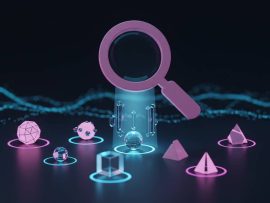
There’s a buzzword in tech, crypto, and venture-capital circles that’s been gaining a lot of attention lately: Web3. It’s the term on everyone’s lips, appearing in conversations, Twitter bios, and even tech conferences. But what exactly is Web3, and is it the future of the internet or just another passing trend?
Contents
Web3: The Next Evolution of the Internet
Web3 is an umbrella term that encompasses various ideas and concepts aimed at decentralizing the internet and reducing the influence of centralized entities. In the early days of the internet (Web 1.0), accessing information was democratized but lacked organization. Then came Web 2.0, which brought platforms like Facebook, Google, and Twitter, centralizing power and control.
Web3 aims to reclaim some of that power for users. It envisions an internet where new social networks, search engines, and marketplaces emerge without the dominance of big tech companies. Web3 is built upon blockchain technology, which is already the foundation of cryptocurrencies like Bitcoin. It operates in a decentralized manner, with data hosted by multiple computers and accessible to anyone. Users are incentivized through tokens, which can be used for voting and even hold real value.
In a Web3 world, individuals would have control over their own data and use a single personalized account to navigate social media, email, and online shopping. All activities would be recorded on the blockchain, creating a transparent and immutable public record.
The Growing Influence of Web3
Although Web3 is still in its early stages, it has gained significant momentum and attention. The rise of non-fungible tokens (NFTs) and blockchain-powered projects has helped propel the Web3 movement forward. Cryptocurrency enthusiasts have even attempted to purchase the U.S. Constitution using digital currency through a decentralized autonomous organization (DAO) called ConstitutionDAO.
Web3’s influence has not gone unnoticed by major tech companies. Twitter, for example, is exploring ways to incorporate Web3 concepts into its platform. The goal is to allow users to log in and interact using cryptocurrency-associated accounts. Rather than replacing Web2 platforms, Web3 is expected to coexist and bring decentralized features to existing services.
Embracing Web3 While Addressing Challenges
Web3 enthusiasts envision a future where users have more control and ownership over their online experiences. However, there are challenges to overcome. Web3’s loosely-defined nature can lead to confusion, making it difficult to explain its full potential. Furthermore, the openness of decentralized platforms can attract negative elements, such as extremist groups.
Experts believe that Web3 will not fully replace Web2 but rather integrate Web3 principles into existing services. Small communities using collective voting for rule-making may offer a more democratic alternative to current social media platforms. Government oversight and regulation are also important factors to consider as blockchain-based tokens enter new regulatory frameworks.
Web3 and the Metaverse
The concept of Web3 intersects with another vision of the internet’s future: the metaverse. Companies like Meta (formerly Facebook) aim to create a digital realm where people live, interact, and work in virtual reality. Interoperability, the ability to seamlessly transfer accounts or avatars across platforms, is a shared principle between Web3 and the metaverse.
However, true Web3 believers argue that Web3 and companies like Meta (Facebook) cannot coexist. They believe that Facebook’s inherent drive for profit conflicts with the principles of a decentralized cyberspace.
Is Web3 the Real Deal or Just Hype?
As with any emerging technology, Web3 has its skeptics. Some argue that Web3 promises an idealized version of the internet without delivering practical solutions. Concerns about privacy and data exposure persist, with blockchain technology potentially making more data public.
Despite the skepticism, Web3 has captured the attention of many investors. Those who profited from cryptocurrencies are now looking for the next big thing, and Web3, albeit mostly theoretical, has become a compelling vision for them.
FAQs
Q: Can Web3 fully replace Web2 platforms like Facebook and Google?
A: Technology scholars believe that Web3 will coexist and integrate with Web2 platforms rather than completely replacing them. Web3’s focus on user empowerment and decentralization will influence the evolution of existing web services.
Q: What challenges does Web3 face in terms of governance and extremist groups?
A: Decentralized platforms have the potential to attract extremist groups, but proponents of Web3 believe that collective voting and community governance can address these challenges more effectively than current social media platforms. Striking the right balance between openness and regulation is crucial.
Conclusion
Web3 represents an exciting vision for the future of the internet, aiming to empower users, decentralize control, and create more democratic online experiences. While it faces challenges and skepticism, the momentum behind Web3 continues to grow. Whether it becomes the internet of the future or remains a buzzword, Web3 has undeniably sparked new conversations and pushed major tech companies to explore its potential. Only time will tell if Web3 becomes an integral part of our digital lives.







